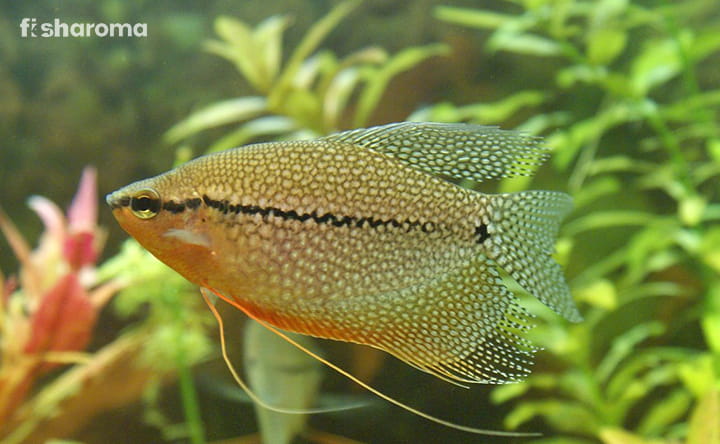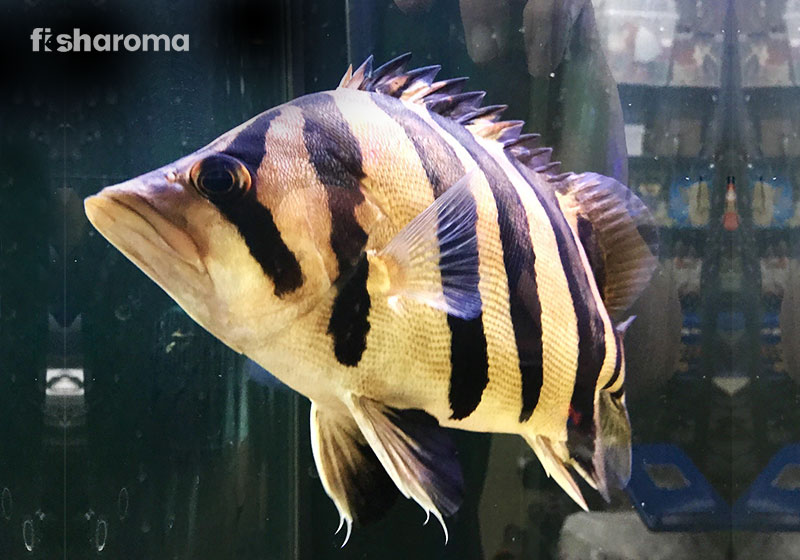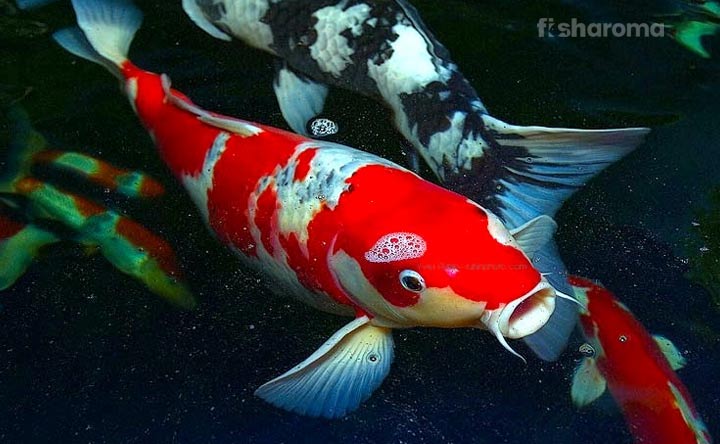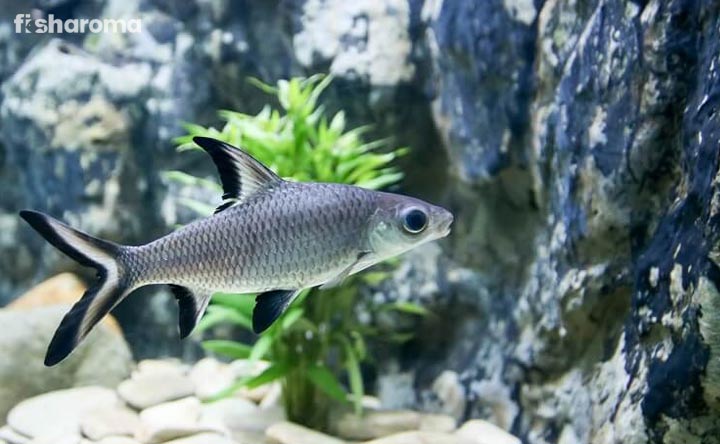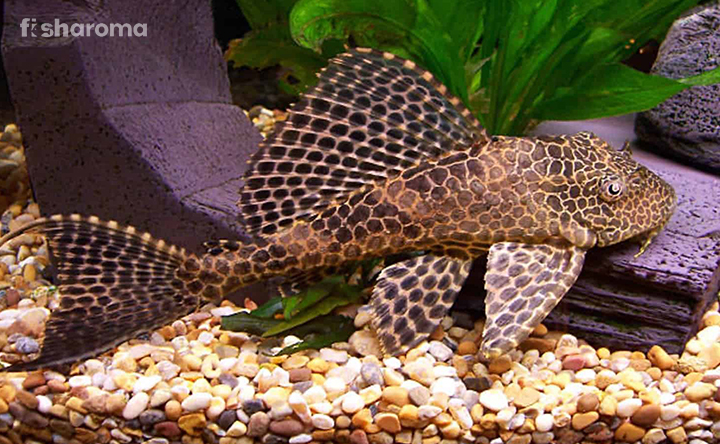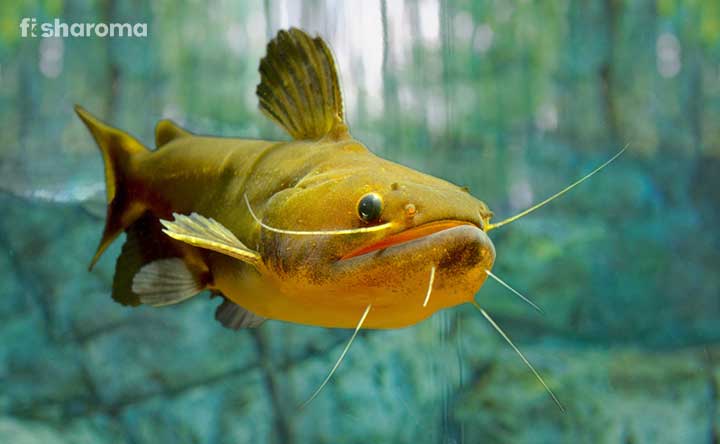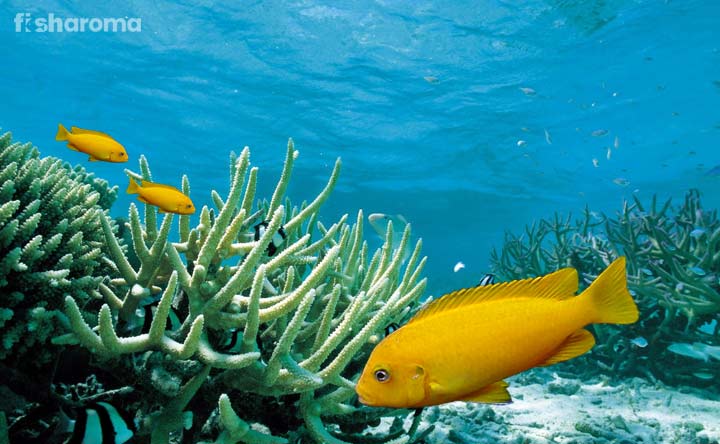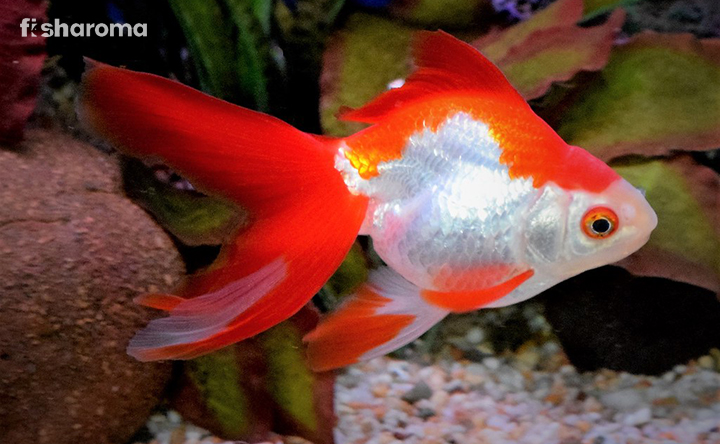Swordtail Fish: The Community-tank Fish Care Guide
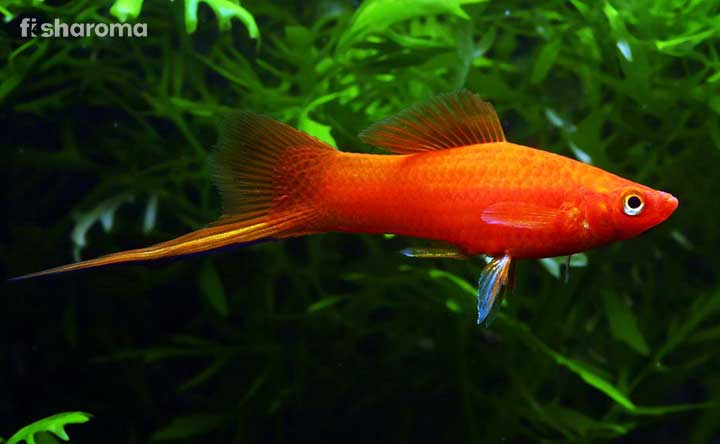
- Origin & Habitat of Swordtail Fish
- Appearance of Swordtail Fish
- Behaviour of Swordtail Fish
- Lifespan of Swordtail Fish
- Diet of Swordtail Fish
- Tank Requirements for Swordtail Fish
- Water Parameters of Swordtail Fish
- Compatibility of Swordtail Fish
- Breeding of Swordtail Fish
- Diseases and Treatment of Swordtail Fish
- Summary
Swordtail fish, a livebearer of freshwater, is one of the most trendy community-tank fish. Surprisingly, this fish fulfils all the expectations of its owner and happily leads a comfortable life in captivity. Being easy-to-take-care, these fishes have conquered the hearts of many fish keepers across the World. With an attractive, long, sword-like tail, these fishes are a peaceful group.
Being a low-maintenance fish, Swordtails eventually helps to avoid any hassle to keep them in a home aquarium. However, an intense look-after, with proper maintenance of diet and water quality is a need for the fish. Let’s dive into this all-inclusive care guide to know more about their lifespan to feeding and more!
Key Specifications of Swordtail Fish
It’s imperative to know all the aspects and conditions to keep a Swordtail Fish in your home. However, it will be easier to just peep through the key specifications before going into details.
| Scientific Name | Xiphophorus helleri |
| Origin | America (North and Central), Mexico to Honduras |
| Lifespan | Up to 5 years |
| Colours | Different |
| Temperament | Peaceful |
| Size | Up to 6.5 inches |
| Diet | Omnivorous |
| Family | Poeciliidae |
| Compatibility | Peaceful fishes |
| Tank Size | 15 Gallons |
| Care Level | Easy |
Overview
Scientifically known as Xiphophorus helleri, these peaceful fishes come from the family of livebearers- Poeciliidae. These fishes are American species and in the wild, they are super active. They are closely related to Southern Platy, another livebearer, with whom these Swordtails can be crossbred. Amazingly, this crossbreeding produces a variety of aquarium fishes that are worth keeping.
Being livebearers, they prefer to breed within the captive condition (this is discussed later in the breeding section). However, in aquarium conditions, these fishes’ colour varies, whereas in wild they generally come in typically one particular colour. Though these fishes demand an easy care level, still the only important requirement for them is a large space to swim actively, somehow mimicking their natural habitat.
Origin and Habitat of Swordtail Fish
Native to North and Central America (Rio Nantla), these fishes are also found in Veracruz of Mexico and northwestern Honduras. The amazing fact about their origin is that, being ornamental species, Swordtail fishes are translocated and introduced as a new set of hybrid populations in 31 countries. The countries include mainly Florida and Nevada.
In their natural habitat, Swordtail fish is found to dwell in rivers and streams, where there is a lot of vegetation. They can live happily in brackish water, a water source that provides low salinity.
Appearance of Swordtail Fish
The first attraction in this fish is their caudal fin. That apart, these fishes have a beautiful elongated lower lobe, situated on their tail, and resembles a sword. This specific feature of sword-like lobe has put glory to their name. However, only male fishes possess this swordtail, hence it is easy to differentiate between male and female.
Strikingly a look-alike of Southern Platy fish, these Swordtail fishes have a standard shaped body that looks absolutely streamlined. They have a wide tail fin, an upturned mouth along with a pointed snout. They look large in the area where dorsal and pelvic fins are present.
In the wild, they are available in single species form, however, for the aquarium trade, these are crossbred with Southern Platy fishes. This crossbreeding provides them with various colours, a worth watching sight for all aquarists.
Colour
They are available in olive green colour in the wild and that forms the base, over which there is a yellow and red streak on both the sides. Mainly the Sword-like protrusion has a yellow and black coloured edge. In the wild, the fishes are distinguished into two types- the Red Swordtail Fish and the Green Swordtail Fish. There are a few rare varieties of this fish that have coloured spots dotted on fins.
The diversely bred species in the aquarium have different colours like red, orange and black. Like most fishes, whose colour fades during stress, these Swordtail Fish gets intensified colouration when stress-free.
Size
The average size of these fishes is 5.5-6.5 inches when they fully mature. The females generally grow larger and reach up to 6.5 inches, whereas the males cannot grow that much and their size remains restricted to 5-5.5 inches.
Behaviour of Swordtail Fish
Swordtail Fishes are peaceful community fishes that prefer to live in groups of the same species, and not in school. You can also keep them in a species-specific tank, where there must be a balanced ratio of male and female. The males tend to show aggression sometimes, for which the females might get stressed, so its better to keep 1 male for every 4 females.
These fishes also tend to become shy and scared, if any high-spirited fish is kept with them. They might slide within plants and other tank decors. They are middle to top dwellers, and rarely explore the bottom portion of the tank. Moreover, Swordtails are active swimmers and can exhibit happiness if you provide them with an even larger tank than normally required.
Lifespan of Swordtail Fish
The Swordtail fishes typically live for up to 3-5 years, which is a natural lifespan of all livebearers. However, their lifespan in captivity, to some extent, depends on proper diet and care. Though, any kind of genetic predisposition and disease can cut their lifespan short.
Diet of Swordtail Fish
These fishes are omnivorous and hence depend on both protein and herbs for their natural growth. Moreover, they are algae eaters and prefer to eat a lot of vegetation that is present in their vicinity. This habit has grown owing to their natural habitat, and this must be imitated in home aquariums also.
In the juvenile stage, they highly depend on protein-rich food, so that they gain the strength to mature quickly. You can provide them with bloodworms, daphnia and brine shrimps. You can add algae wafers and green vegetables so that they get fibre to digest.
As per their feeding requirement, they must be fed 2-3 times a day. The amount must be such, that gets completed within a few minutes. However, if they cannot eat the whole food, then remove the leftovers, so that the water is not polluted. For the protein requirement of adults, put:
- Larvae
- Plant remains
- Micro-organism
- Flakes
- Pellets
Tank Requirements for Swordtail Fish
A well-prepared tank is an ultimate thing that would keep your pet fish happy, depending on the size, decor in it, along with lighting and filtration. Moreover, recreating their natural habitat, in order to keep them active and stress-free is the pivotal thing to remember.
Tank Size
These freshwater fishes are medium-sized and hence don’t need a huge tank. However, a minimum tank size of 15 gallons will be fine for them. If you want to provide a bit larger space to them for swimming peacefully, you can move on to a 20-gallon tank.
These fishes prefer to live in groups, which further demands a large tank. You can keep five gallons of water for one fish and increase that reciprocally.
Tank Lid
These are quite apprehensive species, but actively jump off the tank. Hence, a tank lid is important, so that no fish can jump off to death. Moreover, no dust and dirt can get accumulated in the water.
Substrate
These fishes are not bottom dwellers and hence, the substrate is not a major concern for them. Still, you can use a sandy substrate just to copy their natural living area.
Ornaments
Swordtail Fishes prefer to hide out if they feel timid or shy, in presence of super active boisterous fishes. So, it is better to provide rocks, driftwood and bogwood, so that they can slide in there. You can also create some caves and crevices to provide the natural look of their habitat.
Filter
The filter is not as such required for Swordtail Fish, because they don’t produce any extra waste. They can rather happily live in non-filtered aquariums. However, a natural filtration is important, which can be done through aquaponics over their tank or by keeping live plants within the tank.
Moreover, they need slow-flowing water, so if you plan to keep a filter (no specification needed) then it must produce low current to provide them with natural water flow. For this, you can definitely rely on a low-speed pump that has a filter outlet for imitating decent water current of the wild streams, for comfortable swimming of the fish.
Presence of Flora
These fishes don’t require filtration, for which there must be a way out for the natural filtering process. This can be done by putting natural plants within the tank, where they can also keep themselves hidden whenever they feel threatened. The best plants that can be used for the purpose of creating the best underwater environment are:
It is always better to avoid any kind of synthetic and artificial plant, as this might affect the fishes’ health.
Lighting
Owing to their natural habitat, these fishes are well accustomed to warm sun rays and bright lights. Therefore, they require the same for aquarium life also. Still, extremely vibrant lighting with a colour temperature is not good for the fishes and the plantation in the tank. They might hide away from that bright lighting condition.
Cleaning Method
The tank must be cleaned religiously because it is imperative that no living being can sustain itself in a polluted and untidy place. Thus, it is required to keep the cleaning procedure on for every week. You need to use a cloth for cleaning the walls of the tank, along with slow water from the tap to clean all the residual wastes.
However, while cleaning, you must keep your pet in a separate bowl or tank with the desired water parameters, till the time your tank is not cleaned. Remember to not remove all the algae from the tank, as it would remove natural feedable of the fish from the tank.
Water Parameters of Swordtail Fish
It is extremely crucial for every fish to need proper and well-measured water for thriving actively. All the parameters must be maintained in such a manner, that your pet fish feels the essence of their natural habitat even in your home aquarium.
Temperature
Being extremely hardy tropical fish, these Swordtails can tolerate any wide range of water temperatures. Since they live in warm water in the wild, they prefer a temperature of 23-26 Degrees Celsius. This range is expected to provide them with utmost comfort. However, if not sometimes possible to maintain the above-said range, you can certainly keep it within 18-27 Degrees Celsius, anywhere.
pH Level
Swordtail Fish prefers neutral to alkaline water, for which the optimum pH Level for these fishes needs to be within 7.0-8.4.
This requires regular basis checking of the level in order to resist the water from getting too much acidic or alkaline.
Hardness
The Swordtail fish needs very hard water, which demands a range of hardness between 12-35 dGH.
Apart from this, the level of ammonia, nitrite and nitrate must be maintained, so that the fish does not feel any threat or stress to live in the water.
Replacement Procedure
The replacement of water is very important to allow the fish to live comfortably within the tank. In doing so, you must change the water at least 10 per cent every week, or half of the water every fortnight. Cleanliness is a must for these fishes, however, they don’t produce much waste.
Recommended that you don’t remove the whole water at one go, as this might remove all beneficial bacteria along with the algae, which is something we don’t want!
Compatibility of Swordtail Fish
Swordtails Fish can be paired with similar species, that are as peaceful and active as them. These fishes are social fishes that truly enjoy the company of similar passive tank mates. This is a common sight in the wild habitat, where they generally live with Platies.
Swordtail fishes are not schooling or shoaling fishes, however, they prefer to dwell with groups of their own species. Sometimes, being territorial, male fishes try to show aggression towards the other males. So, it is advisable that you keep one fish in a 15-gallon tank and gradually increase the gallons of water as per the number of fishes.
Suitable Tank Mates
As these fishes are mid to upper dwellers, they prefer to live with a few bottom-dwellers, so that they can live happily; separately yet in the same tank. These can be:
- Otocinclus
- Dwarf Corydoras Catfish
- Zebra Loaches
- Kuhli Loaches
Similarly, in the mid-levels, you can pair them up with so many fishes that you might get confused. The recommended ones are:
- Rosy Barb
- Neon Tetras
- Angelfish
- Mollies
- Dwarf Gourami
- Pearl Danios
- Platies
- Guppies
Just for a change in the company, you can surely try keeping Apple Snails and Ghost Shrimps with them.
Unsuitable Tank Mates
These species might show aggression sometimes, though, in front of any highly spirited fish or aggressive ones, they feel low and threatened. The best way to avoid stress in them is to rule out a few below-listed fishes:
- Convict Cichlids
- Jack Dempseys
Breeding of Swordtail Fish
Livebearers, meaning giving birth to lively young babies just after the eggs develop in the female body. In order to increase the breeding process, the temperature and diet need to be appropriate. However, while spawning, Swordtail Fishes need a little bit warmer temperature, which must range from 26-27 Degrees Celsius. A high protein diet is a must for them, as this provides the necessary amount of protein during spawning.
The mating procedure is interesting to observe, where the males swim around females and occasionally nip them. This is the reason there must be more than 1 female, at least 4. Interestingly, it has been observed many times, males with larger Sword can attract females quickly. After the mating is done, the female gets pregnant, and as they hold eggs, their belly plumps up. There is evidently a dark coloured gravid spot just beside the anal fin.
They are quick to spawn while in captivity and the females can give birth every 28 days. The female, with eggs, generally resides by a corner as they are close to giving birth. Gradually, fully-formed fries are born!
The amazing feature is that females can hold sperm cells in their pouch, and can fertilize that over frequent periods. Every time, once the fries are born, you need to remove the adult fishes. They don’t possess any parental impulse and can easily eat their babies.
Fries need to be taken good care of, for which they must be provided with powdered fish food, baby brine shrimps and infusoria. They cannot intake standard pellets and flakes.
Diseases and Treatment of Swordtail Fish
Livebearers, as per their genetic composition, are less susceptible to diseases; but, not entirely immune to not catch any disease.
Ich or White Spot is a common disease, that might be caused by ectoparasite. There is white-coloured spots all over the body. Another disease that might infect them with, is mouth fungus or cottonmouth disease. This develops swelling and fluffy growths all over the mouth and fins.
As we come to discuss treatment for the Ich disease, it is important to mention that this is highly contagious and is capable of wiping out the entire community within your tank. It is better to quarantine the fish at first and then start the treatment. Raise the temperature of the water to 27.778 Degrees Celsius and put 1 tablespoon of salt in every 2 gallons of water.
Furthermore, for cotton mouth disease, antibiotics are the only way out, that can address the fungi.
Summary
Being extremely easy to handle, Swordtail Fish can even sustain a beginner’s mistake. These freshwater species are very engaging and worth keeping, taking into account both the hassle and finance. The only thing they demand is a little care and they will thrive happily!
The best part is, you will end up with many fishes after a certain time as they are profuse breeders. Enjoy being a pet parent!
Care Guide of Similar Pets
If our article has been satisfactory to you, read more of our blogs to enrich your knowledge on fish care guides.
- Angelfish Care Guide: These Regal Aqua Beauties are also beautiful tank mates of our Swordtails. Read through to find out their interesting features!
- Bumblebee Catfish Care Guide: True to their name, these beauties have whiskers, exactly like Cats. Interesting! Read more to find out.
- Cardinal Tetra Care Guide: Cardinal Tetra by name and similarity to Neon Tetra? This Care Guide will surely help you to know in detail.

